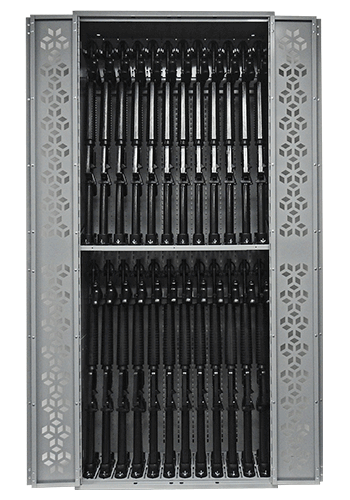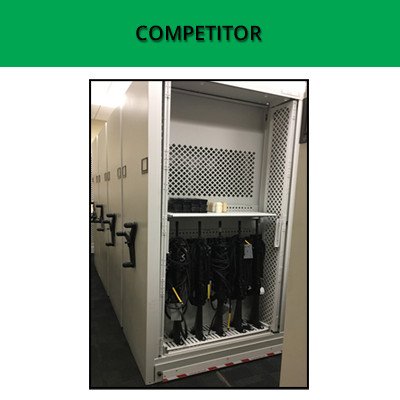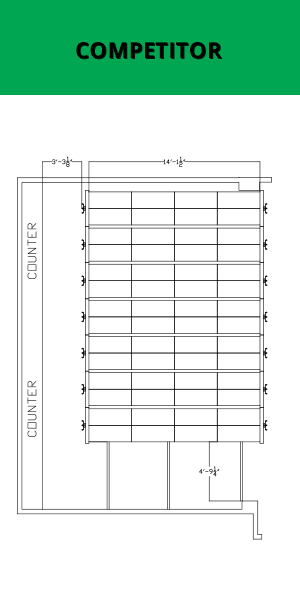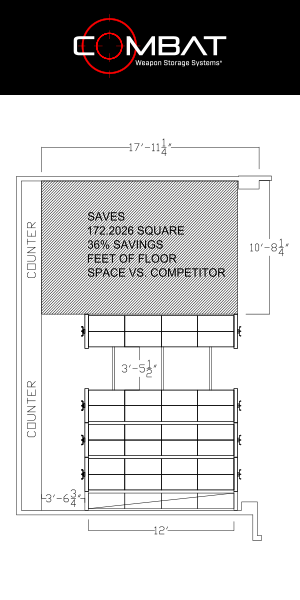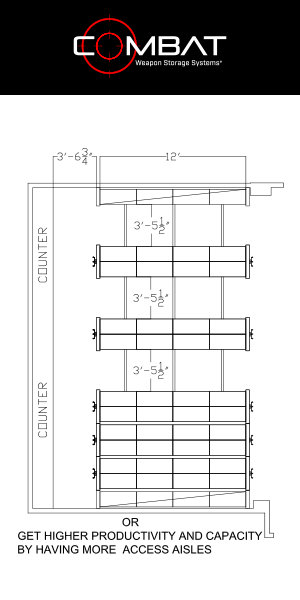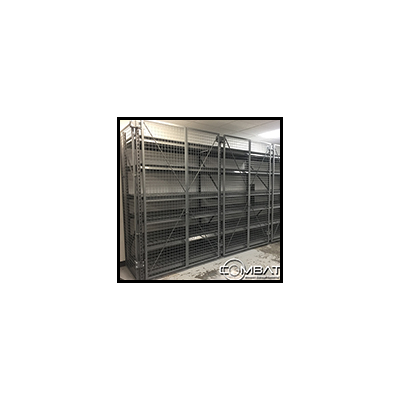High Density Weapon Storage: Reverse Bi-Fold Doors vs. Retractable Weapon Rack Doors
- Determine the amount of space available inside the arms room with an Armory Site Survey
- Review the weapon density list against Weapon Rack Storage Capacity
- How many weapon racks do I need?
- Contact us for GSA Weapon Rack Pricing or review NSN Weapon Racks for supply system purchases
- Ask about how to utilize DLA TLS (Tailored Logistics Support) contract
We detailed how High Density Weapon Storage Systems are configured in a previous post: See High Density Weapon Storage blog post for more details
There are four types of door systems available with weapon racks.
- Fully Hinged Doors
- Bi-Fold Doors
- Retractable Doors
- Reverse Bi-Fold Doors
This post is going to compare Reverse Bi-Fold Doors vs. Retractable Weapon Rack Doors on high density weapon storage systems.
Reverse Bi-Fold Doors fold in half on the face of the weapon cabinet, allowing carriages to be rolled without fully closing weapon rack doors. This also keeps the aisle clear for armorers to store and retrieve weapons and gear.
By minimizing their storage footprint, Reverse Bi-Fold Doors inherently increase production & storage capacity in the armory. This is critical to save space while still storing a weapon density list.
Retractable weapon rack doors slide inside of weapon cabinets when open, taking away from interior cabinet storage capacity and increasing the width of cabinets 6″. We detailed the storage capacity advantage of our 36″ W and 42″ W Combat Weapon Racks v Retractable weapon rack doors in separate blog posts for fixed weapon racks.
With a storage capacity of 10 rifles per tier across a 42″ W cabinet and 6 inches dedicated to storing the door inside the cabinet frame, each retractable door cabinet required increases the amount of floor space needed to store weapons and gear compared to a Reverse Bi-Fold Door weapon rack.
When placing weapon racks on mobile carriages, this ultimately means that carriages will be longer and or will require additional carriages to store the same MTOE (weapon density list) when using retractable door weapon racks.
With a focus on workflow and space savings, retractable weapon rack doors require additional valuable floor space to store weapons and gear.
COMPETITOR
High Density Mobile
Weapon Storage System
- Retractable Doors take away valuable internal rack storage space
- Door glides and wheels fail over time on retractable doors
- Less Storage Capacity requires more floor space & more racks
COMBAT
High Density Mobile
Weapon Storage System
- Move carriages without closing weapon rack doors
- Reverse Bi-Fold Doors do not obstruct aisles folded in-half
- More Storage Capacity with a smaller footprint
WEAPON CAPACITY
Why Weapon Rack Capacity Matters?
Arms room layouts are achieved by measuring the armory and filling the space with applicable storage required to meet your weapon density requirement.
With only one weapon rack width, this will limit your ability to maximize floor space in most arms rooms. Having the opportunity to max out floor space with multiple weapon rack widths tailors the space to match storage capacity instead of being restricted by one weapon rack width.
The same logic can be applied to weapon rack heights. Observing the 18″ fire code requirement can mean utilizing multiple weapon rack heights in an armory.
WEAPON STORAGE SPACE
Mobile Weapon Rack System carriage dimensions are determined by the space available in your arms room and the number of weapon racks required to store your weapon density list and gear. We have installed mobile carriage systems with 30 feet + carriages and systems with carriages just 3 feet.
Combat Weapon Storage will come out and do a free site survey to review your space, go over your requirements in person and also make sure we see the obstructions that may cause issues for a mobile weapon rack system.
Additional Option:
Fill the room with more carriages & receive a
77% increase in capacity over the competition


